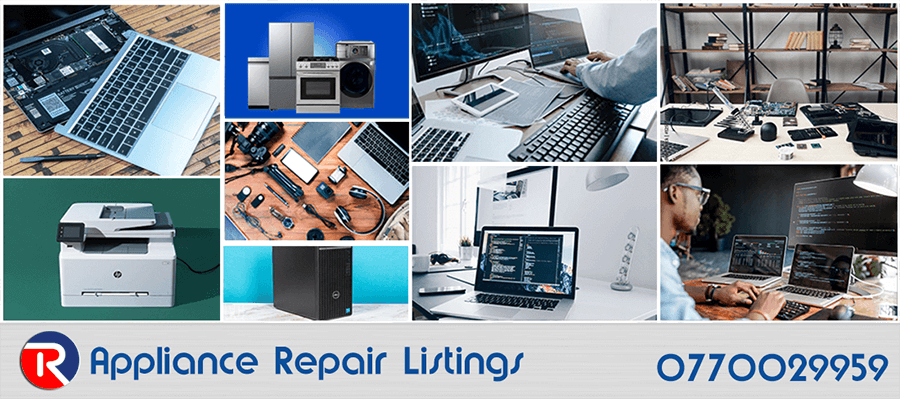
Troubleshooting Laptop USB Port Failures
By Repair.co.ke
Laptop USB ports are essential for connecting peripherals like external drives, keyboards, mice, and charging devices. When they fail, it can disrupt your workflow and cause frustration. At Repair.co.ke, we’ve seen countless USB port issues, and this guide will walk you through diagnosing and fixing them, step by step. Whether it’s a hardware fault, software glitch, or something else, we’ve got you covered with practical solutions.
Common Symptoms of USB Port Failure
USB port issues can manifest in several ways. Your laptop might not recognize devices plugged into the port, or the device may intermittently connect and disconnect. In some cases, the port may not provide power to charge devices, or it might work with some peripherals but not others. These symptoms can stem from software misconfigurations, driver issues, or physical damage to the port itself. Identifying the specific behavior is the first step to pinpointing the cause.
Step 1: Basic Checks
Before diving into complex diagnostics, start with the basics. Test the USB device on another port or computer to confirm it’s working. A faulty device can mimic a port failure. Next, inspect the USB port for physical damage, such as bent pins, debris, or loose connections. Use a flashlight to check for dust or foreign objects, and gently clean the port with compressed air or a soft brush if needed. Avoid using metal tools, as they can cause further damage.
Also, try restarting your laptop. A simple reboot can resolve temporary software glitches affecting USB functionality. If the port still doesn’t work, proceed to the next steps.
Step 2: Software and Driver Troubleshooting
Many USB port issues are software-related. Start by checking the Device Manager (on Windows) or System Information (on macOS) to see if the USB controllers are functioning correctly. In Windows, press Win + X and select Device Manager. Expand the “Universal Serial Bus controllers” section. If you see a yellow triangle or error next to any USB-related entry, there’s likely a driver issue.
To fix this, right-click the problematic controller and select “Update driver.” Choose the option to search automatically for drivers. If that doesn’t work, visit your laptop manufacturer’s website to download and install the latest USB drivers specific to your model. For macOS users, resetting the System Management Controller (SMC) can resolve USB-related issues. Instructions vary by model, so check Apple’s support site for guidance.
Another software culprit could be power management settings. On Windows, go to Device Manager, right-click a USB Root Hub, and select “Properties.” Under the “Power Management” tab, uncheck “Allow the computer to turn off this device to save power.” This prevents the laptop from disabling the port to conserve energy, which can cause connectivity issues.
Step 3: Testing for Hardware Issues
If software fixes don’t resolve the problem, the issue might be hardware-related. USB ports can fail due to physical damage, loose connections, or motherboard issues. To test, plug in a known working USB device and gently wiggle the connector. If the connection is intermittent, the port’s internal contacts may be loose or damaged.
You can also test the port’s power output using a USB voltage tester, available online for a few dollars. If the port isn’t delivering the expected 5V, it could indicate a faulty power circuit. For a more thorough test, boot your laptop into a live USB Linux distribution (like Ubuntu) to rule out Windows or macOS-specific issues. If the port still fails, the problem is likely hardware-based.
Step 4: Advanced Repairs
For hardware issues, proceed with caution. If you’re comfortable with electronics, open the laptop to inspect the USB port’s solder joints on the motherboard. A loose or cracked solder joint can cause intermittent failures. Resoldering requires precision and a steady hand, so if you’re unsure, consult a professional technician.
In some cases, the USB port may be part of a daughterboard, which is easier to replace than resoldering on the main motherboard. Check your laptop’s service manual (available from the manufacturer’s website) to confirm. If the port is integrated into the motherboard, replacement can be costly, and you may need to weigh the repair cost against the laptop’s value.
Step 5: Temporary Workarounds
If repair isn’t immediately feasible, consider workarounds. A USB hub can add functional ports, though it won’t fix the underlying issue. Alternatively, a USB-to-Ethernet or USB-to-Wi-Fi adapter can restore connectivity for specific tasks. For charging issues, use a dedicated charger instead of relying on USB power delivery.
When to Seek Professional Help
If the above steps don’t resolve the issue, it’s time to consult a professional. At Repair.co.ke, we specialize in diagnosing and repairing laptop USB port failures, from simple software fixes to complex motherboard repairs. Persistent issues, especially those involving physical damage or motherboard faults, require specialized tools and expertise.
Preventing Future USB Port Issues
To avoid future problems, handle USB devices carefully when plugging or unplugging them. Avoid forcing connectors into ports, as this can bend pins or damage solder joints. Regularly update your laptop’s drivers and firmware, and keep ports clean to prevent debris buildup. Using a USB hub for frequently connected devices can also reduce wear on your laptop’s ports.